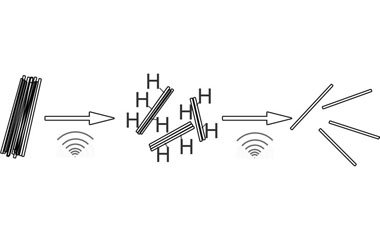Engineers from the University of Georgia and the University of South Carolina (USC) have generated uniform dispersions of carbon nanotubes by combining ultrasonication and hydrogen passivation methods. This development can aid in easier harnessing of the power of carbon nanotubes.
 Hydrogen passivation
Hydrogen passivation
Adding carbon nanotubes to materials can increase the utility of the materials, as carbon nanotubes possess many advantageous properties, including unusual electrical behavior and great mechanical strength. Carbon nanotubes have demonstrated their superiority in a wide range of applications including energy harvesting, energy storage systems, energy conversion, electronic devices, optoelectronic devices and energy-efficient and lightweight composites. But, dispersion of carbon nanotubes in a uniform manner has been a major hindrance in these applications.
Carbon nanotubes are hydrophobic, and they tend to clump together in many polymers and solvents. This property prevents uniform distribution within gels and solids and also for coatings on surfaces. Application of ultrasonication has been attempted for dispersal in solvents, but has not been successful.
College of Engineering and Computing professor at USC, Xiaodong Li, led the team of engineers, who combined hydrogen passivation with ultrasonication and produced multi-walled carbon nanotubes completely dispersed in ethanol within a period of two hours. Scanning and transmission electron microscopy was used to characterize the uniform dispersion. The uniformity of dispersion was even visible to the naked eye.
The team utilized the method and made a composite of nanotube-epoxy. When compared to pure epoxy, the nanocomposite’s elastic modulus when fabricated using hydrogen passivation was enhanced by nearly 100%. Ultrasonication energy induces the breaking of C-C bonds, which then form C-H bonds. Heating can remove the hydrogen in these bonds, which is advantageous.
The advancement has been reported in the Advanced Materials magazine’s Feb. 14 issue.